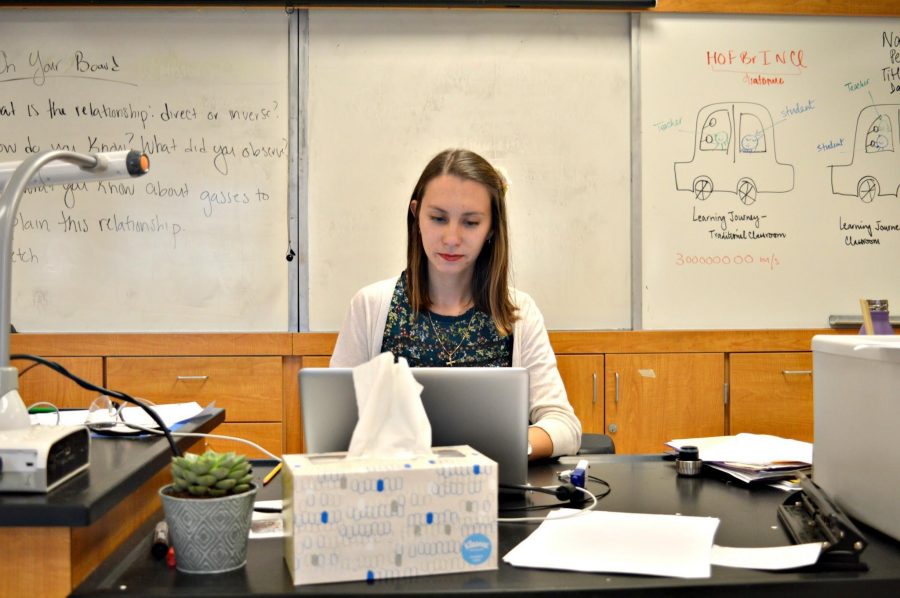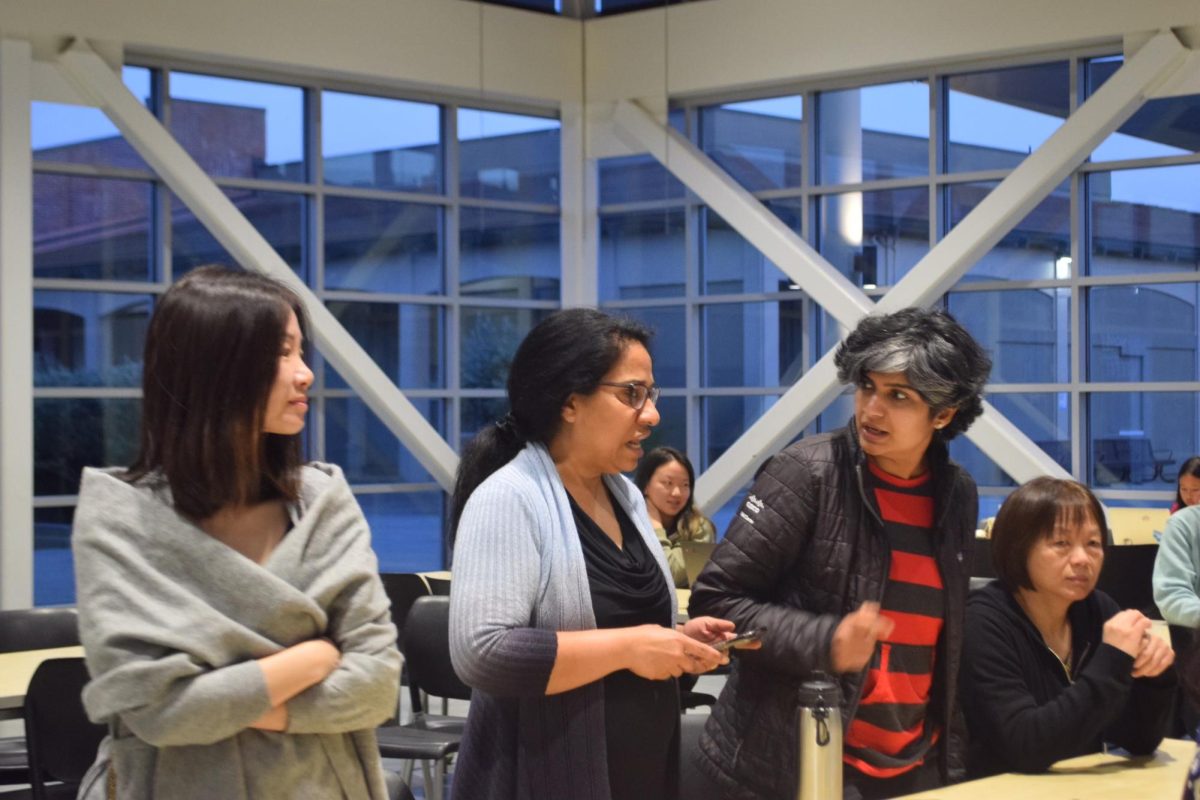Make new friends, but keep the old.
One is silver, the other is gold.
For chemistry and physics teacher Emily Fitzgerald, the proverb applies a little differently: her “silver friend” is physics, a new addition to her repertoire of classes, and chemistry — as she is hardpressed to distinguish a favorite among these two “friends”, an old and gold subject.
“There are parts of both that I really enjoy. I think physics is really fun because you can do a lot of hands-on things and see it happening,” Fitzgerald said. “Whereas [with] chemistry, it’s really interesting to make models that can interpret what’s happening on a tiny, tiny level.”
The retirement of physics teacher Mike McCrystal encouraged Fitzgerald to request a section of physics from the administration as she readied herself for a second year at MVHS. Her fellow staff members had assured her the first year of teaching is always the hardest, but Fitzgerald’s case is an exception. Fitzgerald had taught six classes of chemistry her first year, but is now assigned four classes of chemistry and an addition of two physics classes. Double the subjects equates to double the work, as Fitzgerald phrases it, despite both subjects qualifying as a “science” and requiring similar skills of experimentation or making hypotheses.
“I think [physics is] a very intuitive subject so you can actually observe physics happening [if you] drop a ball and see it fall down,” Fitzgerald said. “But with chemistry, it’s not quite as intuitive, so I have to come up with ways for my students to see what’s happening even though they can’t see it in person.”
Before she even became a full-fledged teacher on the West Coast, Fitzgerald was all the way across the country in New Jersey, earning teaching credentials in both chemistry and physics. The former she earned in a rather unprecedented way: Fitzgerald was under the impression that her teaching credential program focused on chemistry, until she realized that physics constituted the bulk of material. She was quick to sign up for an additional, chemistry-centered course. Regardless of the past confusion it evoked, she is very grateful for the mishap, as it has rewarded her with valuable insight and experience in teaching two subjects.
There’s one slight change, however, Fitzgerald can’t quite adjust to.
“I’m still learning how to be [at] the D building which is always on the back of the school,” Fitzgerald said, “and the E building which is in the front of the school.”
















